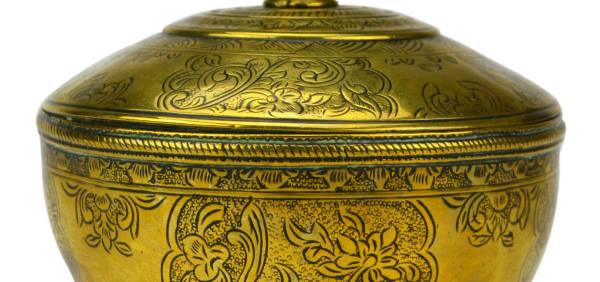One of the things that a collector of prehistoric North American artifacts quickly learns is that very many artifacts are incomplete. That is, whether caused by long-ago use or more recent agricultural equipment, the artifacts are broken or damaged. A flint point or blade will have a missing tip, and a hard stone axe will have plow-scars or an irregular cutting edge. Glacial slate ornaments will have damage ranging from scratches to chipping to outright breakage. Pottery vessels are rarely found in a whole, as-made condition.
The desire to have a complete or “perfect” artifact is present in all collectors, and some choose to make the incomplete complete. Restoration, as the word suggests, is the replacing of missing parts so that the artifact, though not actually complete, at least appears to be. A few collectors do their own work, though most prefer to give their pieces to a skilled and experienced person. These professionals may specialize in certain areas and their “signature” or work style is often so distinctive that it can be identified by others.
Not everything is a worthwhile candidate for restoration. Most restoration pieces are high-grade artifacts that, complete, would be rare or valuable or both. There is little incentive to restore an artifact that, when the work is done, is still only a mediocre artifact. Classes that are often restored include large notched or stemmed blades, fluted points, long drills, high-quality axes, celts and pestles, birdstones, bannerstones, pipes, and so forth.
Simple restoration begins with molding a pliable material to approximate the missing portion. This is then shaped and finished so that the surface resembles that of the artifact. Finally, coloring is done so that the added portion merges with the original. This can be especially difficult when the material is banded slate in several shades, or multi-colored flint. Still, some restoration is so well-done that it is virtually impossible to detect merely by looking at the artifact. Usually the smaller the amount of restoration the more difficult it is to discover. Some pieces may have restoration in three or four places.
Casual looking can often locate so-so-restoration. Close visual examination with a magnifying glass will usually determine differences in surface texture or degree of polish if present. By touch, usually on larger items, the original stone seems colder than the replacement material.
Sometimes at an auction one sees a collector lightly tapping a suspect artifact with a metal display frame pin or something similar. This process locates restoration by ear, with such areas usually having a duller sound. It also helps to know where artifacts are most often likely to be damaged in the first place, which means the most fragile or vulnerable parts of the piece. For example, this would be the neck region of birdstones and the between-notches sections of large Early Archaic notched blades.
While not exactly restoration, one of the most-often-done yet hardest-to-spot repairs is a broken artifact that has merely been glued back together. All the parts of course are original, and one must look for the thin line that separates the two. Modern glues and cements do almost too good a job and can be difficult to detect. This can be especially true for flint and chert, materials which often have meandering thin veins of quartz or “lightning lines” which may appear to be break areas but are actually quite solid. A fairly powerful glass, perhaps a 10-x or so, should detect tiny beading or glue extrusion from repairs.
Collectors have a variety of opinions about restoration. Some have many such artifacts, while others want nothing to do with restored pieces because they feel they are not authentic. Still other collectors occasionally have something restored, especially an almost-complete and favorite piece they have personally found while surface-hunting. This happens so often that there is even a term for such almost-but-not-quite perfect artifacts, “heartbreakers.”
The cost of restoration varies depending on the individual artifact and how much restoration is required. This may range from $20 to $100 and more. To have a pottery vessel reassembled from several handfuls of sherds, and the missing parts replaced, can start at several hundred dollars and go much higher.
Restoration can be a complicated issue, but there are lighter moments as well. A friend showed me a beautiful 5-inch Flint ridge wide-base Dovetail blade, and challenged me to spot the restored area. I glanced at it and casually remarked that it was the bottom right corner of the base. He was amazed and praised my knowledge and eagle eye. I permitted only a modest smile. To this day he does not know that I once owned the artifact, years ago when it was still damaged and unrestored.




